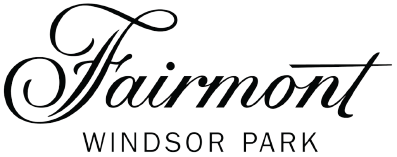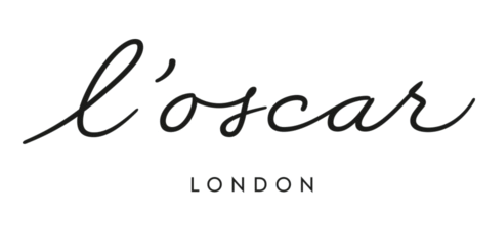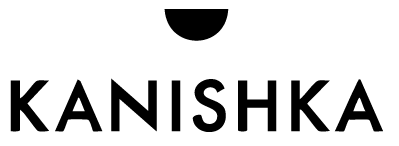
In the world of finance, more and more people are becoming interested in the concept of investments. Investments benefit businesses and individuals alike and can be a great way to earn income.
However, if you’re considering starting your investment journey, it’s important to understand the two main types of investments - traditional and alternative investments.
Each has its own characteristics and potential returns, but what are the main differences between the two? And which is the best option? That’s what we’ll be exploring today. Read on for the essentials of traditional and alternative investments, and for helpful insights on the best choice for you.
What is a Traditional Investment?
When you think of ‘investments’, chances are, your mind goes straight to stocks and bonds. These are the more established, conventional investment avenues. However, there are many different types of traditional investments.
Traditional investments include a range of financial assets that have stood the test of time, providing a sense of security and stability for investors around the world. Traditional investments typically include stocks, bonds, and cash equivalents.
Stocks
When you purchase shares of a company, you become a partial owner of the business. This means you get a share of the company’s profits and losses. However, investing in stocks carries risk.
Be sure to assess your risk tolerance and choose stocks that align with your risk profile. Investing in stocks typically involves careful analysis of the company’s financial health, market position and growth potential.
We recommend speaking to a financial expert before investing in stocks. Financial advisors, for example, can help analyse your financial situation and determine the best approach for you.
Bonds
Bonds are debt securities, typically issued by governments and corporations. As an investor, you’ll essentially be lending money to the issuer. In return, you’ll get periodic interest payments - as well as the return of the original amount at maturity. This type of investment is considered a fixed-income or fixed-interest investment, making it a stable choice if you’re worried about risk.
Cash Equivalents
Cash equivalents, such as money market funds, are considered a safe option for investors. With high liquidity and low to medium risk, they are a great choice if you’re looking for a short-term investment.
These are highly liquid assets that mimic the reliability of cash, such as short-term investments with maturities of three months or less. Examples include Treasury bills and money market funds. Businesses often use cash equivalents to park extra funds temporarily, earning a small amount of interest while keeping funds accessible.
What is an Alternative Investment?
An alternative investment is when you invest in alternative assets or non-traditional assets. These types of investments offer a different experience than traditional investments.
Alternative investments are a great way to diversify your portfolio and can offer potentially higher returns than more conventional investment avenues. There are a wide range of options when it comes to alternative investments, including hedge funds, private equity, real estate and art investment.
Hedge Funds
Hedge funds are pooled investment funds that are managed by professionals. These professionals will use a variety of techniques and strategies to generate returns for their investors.
These strategies can range from long-term stock investments to more complex approaches like short selling and derivatives trading. Unlike traditional investments, hedge funds can use diverse techniques like short selling, leverage, and derivatives to capitalise on market opportunities.
Although hedge funds have the potential for significant returns, there is a high level of risk. Due to their complex nature and limited regulatory oversight, hedge funds may not be suitable for all investors. Be sure to determine your risk tolerance and conduct thorough research to determine whether this is the best investment approach for you.
Private Equity
Private equity involves investing in private companies or acquiring ownership stakes. This form of investment often requires a longer-term commitment, as investors actively participate in the management and growth of the companies they invest in. This means that private equity may not be the best choice if you’re looking for a hands-off way of generating passive income.
Real Estate
Real estate investments involve buying, owning, and managing properties for rental income or capital appreciation. This tangible asset class provides you with the potential for steady cash flow and long-term appreciation.
However, there may be additional factors to consider when investing in real estate. For example, the property market isn’t always stable, and prices can fluctuate. Likewise, there may be additional costs to consider such as property management fees and cleaning costs. There’s a risk you may not be able to find tenants to fill the property too.
Art Investments
Art is one of the most popular alternative investments. More and more people are beginning to understand the benefits of art investment. Not only is it a great way to generate income, but art is something you can enjoy without affecting the value of your investment.
Likewise, the art market is historically resilient. It can withstand times of economic uncertainty and even recession, making art investment a stable choice. There are a wide range of options to consider when investing in art. For example, if you have a low-risk tolerance, you can opt for blue-chip art.
This refers to art that is likely to either retain its value or appreciate in value. However, if you’re looking for a high-risk, high-reward venture, you could choose to invest in up-and-coming artists. When you invest in emerging artists, you can usually buy art for an affordable price and there’s a chance you could sell it for much more at a later date.
For example, anonymous street artist Banksy charged just £50 for his signed prints at the start of his career - and the same prints now sell for thousands to millions of pounds.
The Key Differences Between Traditional and Alternative Investments
Now you understand what traditional investments and alternative investments are, let’s explore some of the core differences between the two.
Risk and Return Profile
Traditional Investments are known for their relative stability. They offer a lower risk but typically come with moderate returns, making them a stable choice if you’re a first-time investor. On the other hand, alternative investments generally have a higher risk-reward dynamic. Potential returns can be high, but be sure to consider market volatility.
Liquidity
One of the key differences between alternative and traditional investments is the level of liquidity. Traditional investments are easily tradable in the open market, providing high liquidity.
Alternative investments, however, are often less liquid. They typically require a longer investment horizon due to lock-up periods or the nature of the asset class.
Ownership and Control
Investors in traditional assets like stocks and bonds often have limited control and influence over the companies they invest in. However, if you invest in private equity and real estate investments, you will typically have a more active role. This means you can make strategic decisions and have more control over the outcomes of your investments.
Which is Best for Me?
When choosing between traditional and alternative investments, consider your financial goals and risk tolerance. Be sure to conduct thorough due diligence and keep informed about the current market conditions.
Traditional investments, like stocks and bonds, are well-established and generally considered safer. They offer stability but may have lower potential returns. If you prefer a more predictable path with minimal risk, traditional investments might suit you.
On the other hand, alternative investments, such as art investment, can offer higher returns. Many alternative investments require a higher risk tolerance and a longer investment horizon.
This means alternative investments can make a great long-term investment. Many investors invest in a combination of both traditional and alternative assets to diversify their portfolios. If you’re considering investing in art, you’re in the right place.
Through Grove Gallery, you can invest in a wide range of artists, from well-known names such as street artist Banksy and famous Pop Artist Andy Warhol to up-and-coming artists.
We offer a curated selection of artworks, making art investment accessible to everyone. Whether you visit our London gallery or download our investment guide, investing in art has never been easier. Invest with as little as £3,000 today.






